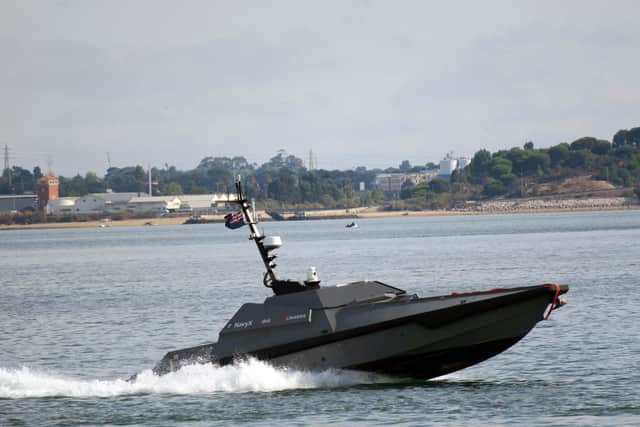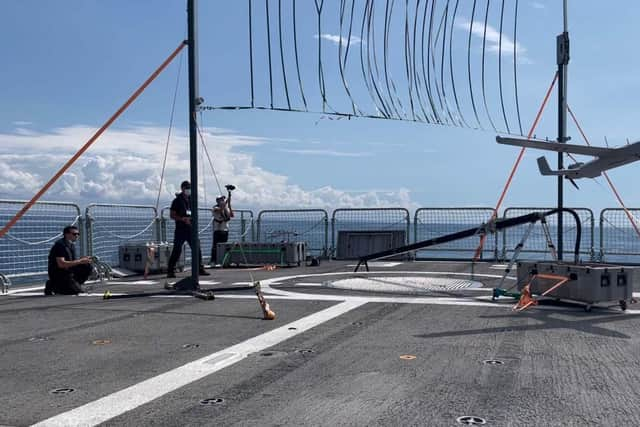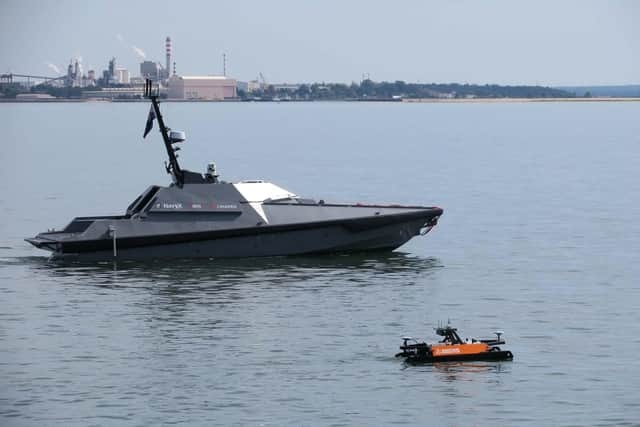Royal Navy's new James Bond 'spy boat' fires missile in an historic first for UK drone tech
This article contains affiliate links. We may earn a small commission on items purchased through this article, but that does not affect our editorial judgement.
and live on Freeview channel 276
The futuristic Madfox vessel – which has been undergoing tests in the Solent for months – fired the missile during a Nato war game in Portugal.
The two-week exercise saw the latest in drone technology being put through its paces to see how autonomous military kit can be used on the battlefield.
Advertisement
Hide AdAdvertisement
Hide AdMadfox, which is kitted out with hi-tech cameras able to spy on ships hundreds of metres away, was part of a surveillance training operation that ended in a successful missile launch.


For the trial, a Puma drone launched by USNS Carson City relayed information to a land-based control centre of a possible target – in this case a simulated target of a Spanish crewless boat.
Once received, that information was sent to the navy spy boat and the missile launched.
Commander Antony Crabb, team leader of NavyX – which is testing the Madfox – said: ‘The system launch from Madfox was a UK first, demonstrating the potential of uncrewed surface vessels for lethal and other payloads; crucially, the whole serial was commanded, enabled and facilitated using information provided by uncrewed systems.
Advertisement
Hide AdAdvertisement
Hide Ad‘It is a significant step for UK/US interoperability and interchangeability.’


Later in the exercise, Royal Navy technology supported night-time amphibious operations. It saw Madfox observe a ‘target’, undetected, and provide live imagery using its onboard cameras.
As Portuguese Marines stormed ashore, aerial drones provided further surveillance, sending imagery to computer tablets within the assault forces. Personnel in the maritime operations centre were able to make an assessment of the target defences and enemy strength before ordering an attack.
Lieutenant Maia of the Corpo de Fuzileiros said: ‘The situational awareness provided by Madfox and the aerial drones was brilliant and the new technology enabled very close coordination between the headquarters and my Marines.


Advertisement
Hide AdAdvertisement
Hide Ad‘Even before leaving the ship we had good information, and this was updated as we travelled to the target. It really showed how Nato drones are becoming more and more interoperable.’
More than 900 personnel, 70 autonomous uncrewed systems and 11 navy vessels took part in the drill, which was Madfox’s first overseas test.
The spy boat has previously been carrying out tests across the Solent.
Looking for the latest Royal Navy updates from Portsmouth? Join our new Royal Navy news Facebook group to keep up to date.
A message from the Editor, Mark Waldron
You can subscribe here for unlimited access to our online coverage, including Pompey, with 70 per cent fewer adverts for less than 20p a day.
Comment Guidelines
National World encourages reader discussion on our stories. User feedback, insights and back-and-forth exchanges add a rich layer of context to reporting. Please review our Community Guidelines before commenting.
